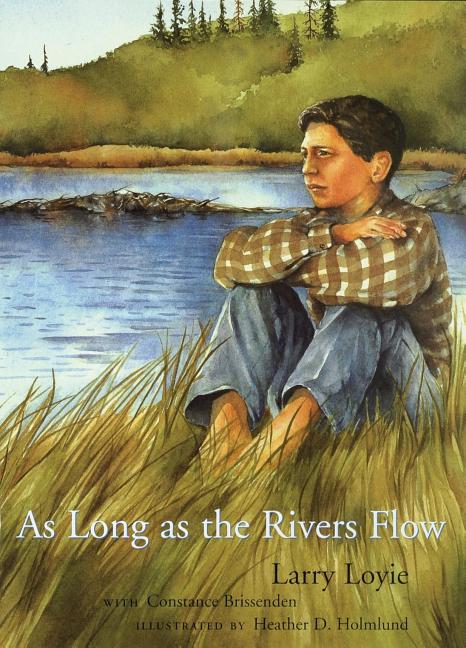Book Descriptions
for As Long as the Rivers Flow by Larry Loyie, Constance Brissenden, and Heather D. Holmlund
From Cooperative Children's Book Center (CCBC)
Four chapters describe the summer of 1944, Lawrence Loyie’s last summer with his Cree family in northern Alberta, Canada, before he and his sister and brothers were sent to a residential school for North American native children. The busy summer finds Lawrence caring for a baby owl and traveling to the family summer camp, where he and his cousins find time to pick berries and swim, along with their chores. In one tensely dramatic scene, Lawrence and his grandmother confront a huge and angry grizzly bear, which Grandma kills with a single shot from her small .22 rifle. In a poignant finale at the season’s end, Lawrence and the other children are taken away by strangers in the back of an open truck to attend a distant boarding school. The brief epilogue describes how the author was one of thousands of First Nations children who were forcibly removed from their families and sent to residential schools, a practice which began around 1880 and continued for 100 years. Watercolor illustrations on almost every page accompany the main text, while black-and-white photographs in the epilogue show Lawrence and his siblings in group photos at their residential school. (Ages 8–12)
CCBC Choices 2004 . © Cooperative Children's Book Center, Univ. of Wisconsin - Madison, 2004. Used with permission.
From the Publisher
Before he is taken away to a government sponsored school, a young Cree boy spends the summer learning how members of his tribe participate in Cree traditions, such as watching his Grandmother make winter moccasins. Reprint.
Publisher description retrieved from Google Books.


